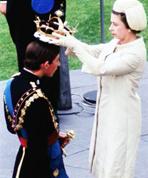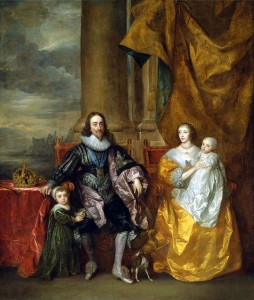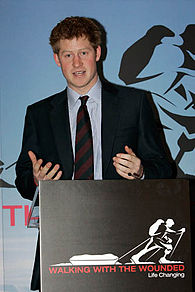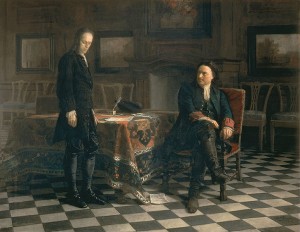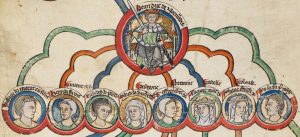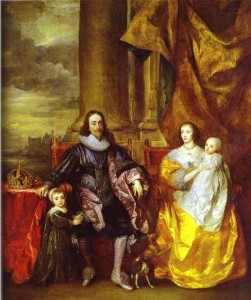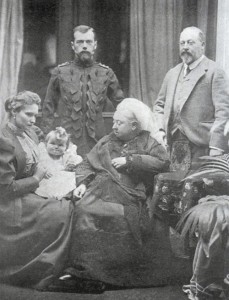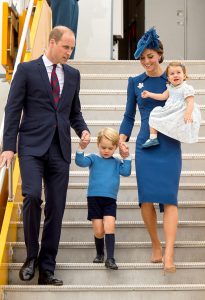My New Year’s Resolution for 2018 is to read a book (or listen to an unabridged audiobook) every day: 365 books by December 31. I will post my reviews here each week and provide regular updates on Twitter and Goodreads. Recommendations are always welcome!
Week 11: Royal Succession The first book I read this past week examined how “unexpected heirs” who were not educated to wield power shaped the history of Early Modern Europe. Throughout British history, numerous monarchs have been second sons or second daughters including Henry VIII, Charles I, George V, George VI, Elizabeth I and Anne. The theme of unexpected developments in royal lines of succession informed the rest of the week’s reading. Here are my reviews:

Date Read: March 15, 2018
Genre: Royal History
Format: E-Book, 280 pages
Acquired: Borrowed from Robarts Library, University of Toronto
Review: Unexpected Heirs in Early Modern Europe: Potential Kings and Queens examines the educations, images and actions of unlikely monarchs in Early Modern Europe, demonstrating that they often came to the throne with very different experiences than Kings and Queens who were born with a clear expectation of the throne. My favourite chapters included Valerie Schutte’s examination of books dedicated to Mary I and Elizabeth I before they respectively succeeded to the English throne, demonstrating popular views of the amount of influence wielded by each princess, and Troy Heffernan’s study of how the education of the future Queen Anne was less comprehensive that that of her male predecessors and even previous queens such as Mary and Elizabeth. The final chapter, by William Robison, about Elizabeth I as an unexpected heir summarizes the contingencies that governed that entire royal succession from Anglo-Saxon times to the sixteenth century, emphasizing how rarely the throne passed from father to son without unexpected developments. A fascinating read that includes analysis of Early Modern royalty in England, Scotland France and Sweden.

Genre: Royal History
Format: Hardcover, 115 pages
Acquired: Borrowed from Robarts Library, University of Toronto
Date Read: March 15, 2018
Review: George I succeeded his second cousin, Queen Anne, as the monarch of Great Britain after Anne died without surviving children (despite seventeen pregnancies) in 1714. Blanning provides a detailed analysis of the succession of the Hanover dynasty to the English throne, challenging the perception that George I was distant relation of Queen Anne as his mother, Sophia of Hanover, was a granddaughter of James I, niece of Charles I and cousin of Charles II and James II. The domestic and foreign policy, economics, culture and society of George I’s reign are all discussed in this short biography. While some of the other titles in the Penguin monarchs series focus on a monarch’s political activity at the expense of his or her personal life, Blanning also discusses George I’s “seedy private life,” which was satirized by his subjects, and his famously acrimonious relationship with his son, the future King George II. Blanning’s only defense of George I’s relationship with his son is “At least George did not follow the example of Peter the Great…”A comprehensive further reading list organized by theme is included at the end of the book.

Genre: Royal History
Format: Audiobook, 14 hours and 33 minutes
Acquired: Purchased from Audible.com
Dates Listened: March 13-16, 2018
Review:

Format: Hardcover, 128 pages
Date Read: March 16, 2018
Acquired: Borrowed from Robarts Library, University of Toronto
Genre: Royal History
Review: An comprehensive short biography of Henry V, who became heir to the throne after his father, Henry IV, deposed his cousin Richard II and seized the throne. Anne Curry has written extensively about the Battle of Agincourt and that research informs the book but she also includes lesser known information about Henry V including his book collection (Henry enjoyed Chaucer and other English language authors) and patronage of the Bridgettine monastic order. Curry concludes that Henry was “one of England’s busiest kings,” an accurate assessment considering his achievements in war, diplomacy and politics before his early death at the age of thirty-five.

Genre: Royal History
Format: Hardcover, 118 pages
Acquired: Borrowed from Robarts Library, University of Toronto
Date Read: March 16-17, 2018
Review: A short sympathetic biography of one of England’s most unsuccessful monarchs. Henry VI succeeded to throne at the age of just nine months. Ross examines Henry’s famous piety as well as his periods of mental illness, likely inherited from his maternal grandfather, King Charles VI “the Mad” or “the Foolish” of France. Henry VI emerges as neither an entirely passive figure nor a consistently active monarch. Henry was easily influenced by his courtiers and queen and prone to abrupt changes in policy, from excessive generosity to severe repression of dissent. Perhaps the most poignant moment in the book is the evidence that Henry was aware of his own shortcomings as monarch. When asked if he wished to be buried next his father, Henry V, the victor of the Battle of Agincourt, Henry VI stated “Nay let him alone: he lieth like a noble prince. I will not trouble him.”

Genre: Royal History
Date Read: March 17-18, 2018
Acquired: Borrowed from Robarts Library, University of Toronto
Format: Hardcover, 128 pages
Review: A short critical biography of Edward IV. Pollard judges Edward to have been resourceful leader in the crises of the Wars of the Roses and an able military commander but a king who “did not look much beyond his immediate personal interests and desires.” Pollard observes parallels between Edward IV and his grandson Henry VIII, noting that both were handsome young princes fascinated by tournaments and courtly display who became increasingly obese and self indulgent as they grew older.
In contrast, Pollard provides a surprisingly positive assessment of Elizabeth Woodville as queen, noting that she fulfilled the requirements of a queen consort including motherhood, piety and patronage although she was unfairly maligned as an ambitious intriguer. Pollard concludes by noting that Edward IV belonged to a dysfunctional family, ordering the murder of his brother George then having his own children disinherited by his brother Richard III after his death. I look forward to reading the biographies of Richard III and Henry VII in this series, when they are published later in the year.

Genre: History
Format: Audiobook, 18 hours and 52 minutes
Acquired: Purchased from Audible.com
Dates Listened: March 16-19, 2018
Review:An engaging history of Ancient Egypt, providing a detailed analysis of the Old Kingdom (best known for the building of the Pyramids of Giza), the Middle Kingdom (a period of literary Renaissance), the New Kingdom (including the famous Pharaohs of the 18th dynasty: Akhenaten and Nefertiti, Hatsheput, and Tutankhamen as well as the military victories of Ramses II), and the foreign invasions of the Third Intermediate Period and Late Period. The Ptolemaic Dynasty, which ended with the defeat of Mark Antony and Cleopatra VII at the Battle of Actium, is passed over quickly with the Ptolemaic Pharaohs prior to Cleopatra summarized in a single chapter.
Wilkinson focuses on the elites at the top of the social pyramid including Pharaohs, their families and high officials. This emphasis on the lives of the wealthy reflects the surviving archaeological evidence, including tomb inscriptions, but the book also includes the difficult conditions faced by ordinary people such as the evidence of one of earliest labour strikes.
While I enjoyed much of the book, I found the author was quite critical of the Pharaohs of the Third Intermediate Period and Late Period because they did not measure up to the standards set by the New Kingdom rulers. Even during the chapter on the reign of Cleopatra, one thousand years after the New Kingdom, there is a comparison to this earlier zenith of ancient Egyptian empire. I would have preferred an assessment of the later rulers according to the standards of their own times instead of continuous comparisons with the glories of the New Kingdom. Otherwise, the book is richly detailed, and emphasizes the lasting impact of Ancient Egypt on modern history. The audiobook is well read by Michael Page.
